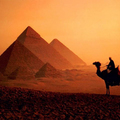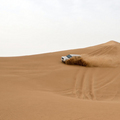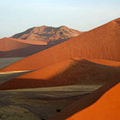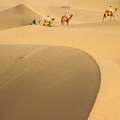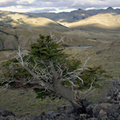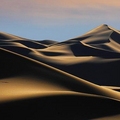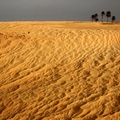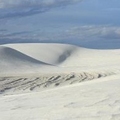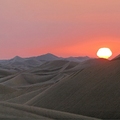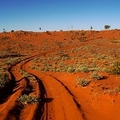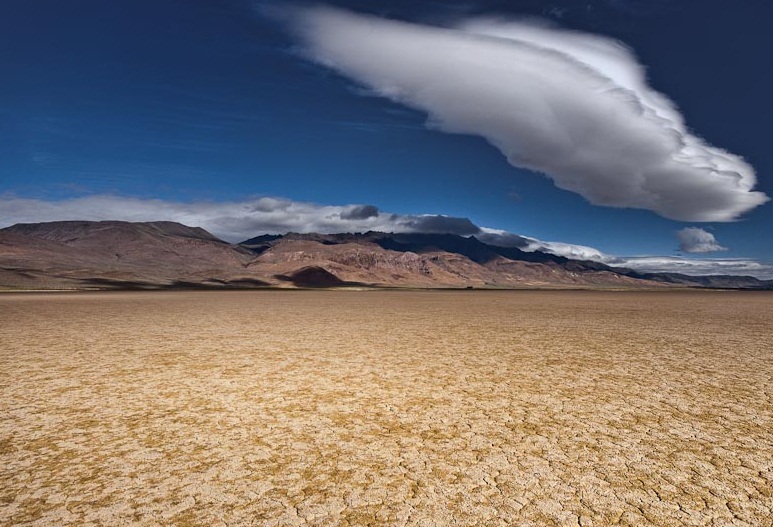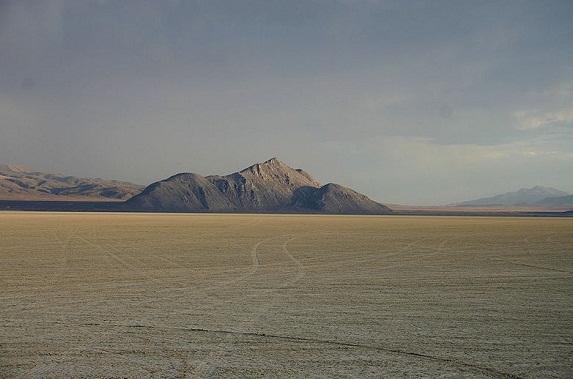Eco-friendly locations / The Largest Deserts in the World / The Great Basin Desert
The Great Basin Desert
The Great Basin, the largest undrained region of North America occupies the highlands , stretching from the north to the south and it is bounded on the west ridge with the Sierra Nevada and the Mountains Cascade and in the east with the Rocky Mountains. Its area is more than 500 000 km ². The relief is a set of short ranges (up to 3900 m) and large, connected each of the basins, most of which are desert or semi-deserts . The Great Basin is one of the most arid regions of America and it has no outlet (most of the rivers and lakes have dried up). About 10 000 years ago, most of the basin was covered with two large lakes, out of which the Great Salt Lake survived together with salt marshes and vast flat plains, which served as the bottom of ancient lakes. From a geological point of view, the pool is in the process of stretching and breaking. This is a sparsely populated region (the two largest cities are the Salt Lake City and Reno ). This fact and the uniqueness of the ecological system of the Great Basin, however, attract more and more willing persons to buy a real estate in the region, as well as tourists. While the lower layers of rock from the Archean come, the surface shape of the Great Basin is only about 17 million years old. Due to an error in the measurement in the region of the Great Basin it was believed until the 1840s that a Buenaventura River connected the Great Salt Lake with the Pacific. The Great Basin consists of about 100 sub-basins or valleys, in which numerous "mountain islands" are. It is of steppe-like areas, stone and sand desert , mostly lying dry creek rivers , canyons , salt lakes and pans, and some small and large lakes (the Great Salt Lake , Utahsee and the Pyramid Lake ) dominated. In the north of the Great Basin runs the Humboldt River , which ends in the west flank of the Sierra Nevada in small endorheic lakes where the water evaporates in the desert air.
Others The Largest Deserts in the World .
Maps of The Great Basin Desert
map United StatesOthers from The Largest Deserts in the World
Under such dry conditions it is hard for the plants to live and the soils to form.
There is anything that protects the earth from overheating in these areas.
The hottest place on the Earth is the tropical desert, but there are coldest , even icy deserts, for instance, Antarctica.
Deserts cover approximately 20% of the Earth's land surface and 80% in Australia , therefore, a fifth of the Earth's land area belongs to the deserts.
Many of the major deserts are located near the tropics, such as the Sahara desert which is the largest desert in the world, as well as the Kalahari, the Namib Desert and the Grand Victoria in Australia.
Droughts During the grazing of cattle during droughts disorders of vegetation occur.
They are so significant that are likely unrecovered.
The sun's rays quickly dry the soil and turn to dust, which happens to desertification, a continuous transformation of the land in the desert.
A desert with a change in climatic conditions can always shrink and expand.
The long-term global climate change or contraction of the continents can garden the desert or turn it into a magnificent forest.
Short-lived changes in weather conditions influence the expansion of its borders, turning occasionally green areas in arid deserts.
The hottest places on the Earth are the tropical desert, where the daytime temperatures often reach +50 ° C.
This heat can destroy the stones and give the landscape an unusual character.
The underground water evaporates so quickly that minerals are dissolved from the crust.
Deserts are constantly dry, but in other natural areas prolonged dry periods can occur - the droughts.
Their presence in any place depends on what kind of rainfall is there.
There was a drought in Sahel, Africa, that lasted many months without rain.
However, droughts are regular and in some places they are with a typical moisture content, such as the North American grasslands which dry up every 22 years.
Water plays a significant role in shaping the dry landscape, despite of its low quantity in the desert .
Water alters the chemical composition of rocks, now and then it is dumped in the desert from the sky, at times becoming the cause of short, but strong flash floods, which are harmful to the soil.
Do all the deserts have very high temperatures and a lot of sand? We call a desert an area where not more than 25 inches of rain falls per year.
As a rule, deserts are formed in the hot desert climates, but there are exceptions.
Most deserts have a lot of rocks and stones and sand.
What is the biggest desert? The most extensive deserts are located in areas of high atmospheric pressures.
All the winds blow in areas of their inner regions, but the moist winds from the sea reach them very rarely.
There are those deserts, which are near the sea, and yet the sea winds will reach them, they lose most of moisture on the way.
Certain deserts are formed on the internal continental slopes of mountain ranges, well sheltered from the sea winds.
Almost all of Antarctica is a huge frozen desert, which is located in an area of high pressure, so that its interior is extremely small drops of fresh snow.
The driest desert in the world.
In many deserts there is no rain for several years in a row, then a short downpour happens and everything starts all over again.
The most arid desert is the Atacama Desert in South America .
Until 1971, there were 400 years without spilling a drop.
It is known that in several places in the desert, there are artesian waters, but the high boron content makes them unsuitable for irrigation.
What is an oasis? An oasis is a plot of land in the desert, which is covered with vegetation.
It feeds from underground springs or natural wells.
The largest desert in the world The largest desert in the world is the Sahara Desert in North Africa.
Its area is of approximately 8400 sq.
km.
However, only ten percent of its territory is covered with sand, and everything else is taken by bare rocks and stones.
After Sahara, we have the Arabian desert, the Gobi, the Patagonian,the Rub’ al Khali, the Great Victoria, the Kalahari, the Great Basin, the Chihuahuan and the Thar.

